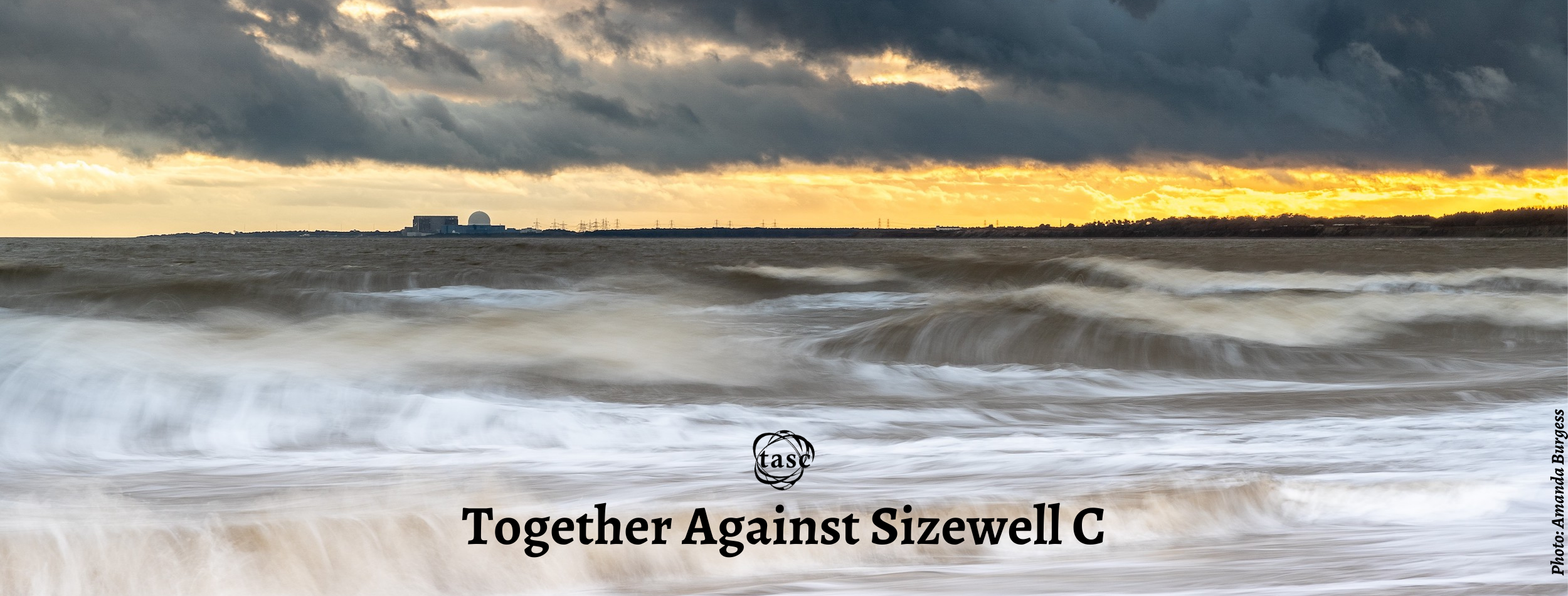
4th December
Dear Dr Coffey,
Sizewell C’s vulnerability to coastal erosion and the implications for its commercial viability
The recent storms experienced on the Suffolk coast and the related erosion have reinforced the concerns of many residents in relation to the vulnerability of the Sizewell C (SZC) site to rising sea levels, increased storm surges and more extreme weather events as a result of climate change. One does not need to be opposed to nuclear power in principle to appreciate that the SZC site is no longer a suitable site for new nuclear due to its extreme vulnerability to erosion and the associated flood risk, coupled with the lack of a guaranteed and sustainable potable water supply essential for its 60 years of operation. Indeed, the lack of potable water was the main reason why the panel of 5 professional planning inspectors recommended that the project should not proceed. The example of HS2 demonstrates the enormous damage that can be wreaked on the UK’s finances and the environment when the true costs of projects are hidden from decision makers such as MPs and the very people who are expected to help finance them, in SZC case, the UK taxpayer.
These storms have coincided with SZC Co’s applications to East Suffolk Council for the discharge of DCO ‘Requirements’ related to the final design of the sea defences (Requirement 19) and the final version of the Coastal Processes Monitoring and Mitigation Plan (CPMMP) (Requirement 12). TASC has submitted objections to both aforementioned Requirements (see Note 1). Some of the recent storm impact has been recognised in Suffolk County Council’s response dated 20th November 2023 to the discharge of Requirement 19 which states “Storm Babet illustrates the dynamic nature of the beach with the beach level being reduced overnight and the current low dune/vegetated shingle strip reduced in width.”
From personal observation by residents and members of TASC, we would estimate that the narrow expanse of sand dunes that currently stands between the North Sea and the SZC site have lost about 3 metres to the sea in the last 24 months. It takes little imagination to realise what could happen to the coastline in front of the Sizewell nuclear sites, as well as the coast just to the north of the SZC site where the sea will likely breach the low-lying dunes leading to flooding around the western elevation of the SZC site.
It is imperative that the proposed sea defences protect the SZC site for its full lifetime (which according to the joint ONR/EA guidance is about 160 years) and with the project having been in the planning for over a decade, TASC fails to understand why the plans submitted by SZC Co to discharge requirement 19 are still not the final version of the sea defence design. Unbelievably, SZC Co’s new proposal is for the design life of the sea defences to expire by 2120, even though the expectation is that the SZC site will continue to store spent nuclear fuel on site until the mid to late 2100s and DCO approval was given on the basis that the Hard Coastal defence Feature (HCDF) and CPMMP would have a design life till 2140. This is particularly important, as TASC put to the Planning Inspectorate during the DCO process, because even a design life of 2140 would not cover the full lifetime of the site i.e. until all spent nuclear fuel has been removed from the site. Indeed, the applicant’s own DCO documentation for their spent fuel strategy predicts that the site would not be free from spent nuclear fuel and fully decommissioned i.e. all spent fuel removed and the spent fuel store decommissioned, until 2165 at the earliest (see Note 2).
Should the design life of the HCDF be guaranteed only until 2120, it will have major implications for site safety as well as adversely impact the commercial viability of the SZC project. The Office for Nuclear Regulation advised TASC that it will take about 70 years after the plant stops generating electricity for spent fuel to cool sufficiently, be safely moved offsite and the store decommissioned (broadly supporting the applicant’s own documents referenced in Note 2). With the existing spent fuel strategy, the only way a 2120 deadline could be met at Sizewell C would be to slash its operating life by over 30 years, meaning generation stops as early as 2050, driving a coach and horses through this project’s claimed commercial viability and contribution to meeting the UK’s carbon reduction goals. The alternative would be to try to move the spent fuel earlier than expected but it would not be safe to store in a Geological Disposal Facility (if there ever is one). Also, an offsite interim storage facility has not been costed nor has one been environmentally assessed.
TASC understands that, at the present time, the UK government have a 50% stake in SZC but despite this, the expected construction costs are hidden behind the sham claims of ‘commercial sensitivity’. Taxpayers are already funding the project so there needs to be openness and transparency about the amounts involved and what the true financial risks to UK taxpayers and electricity consumers are. There is no competition for potential developers of Sizewell C so there is no legitimate reason to hide the expected costs for building its twin EPR reactors and required infrastructure.
TASC request that you pass on this information to the Dept for Energy Security and Net Zero and ask them:-
- To disclose the current estimate of the cost to get Sizewell C to an operational state, including all ancillary costs such as new potable water infrastructure essential for its 60 years of operation and any costs associated with a new spent fuel strategy,
- To explain how Sizewell C’s spent nuclear fuel will be kept safe for the full lifetime of the site when Sizewell C’s sea defences will only have a design life till 2120,
- To confirm the date by when the UK government expect Sizewell C to be clear of spent nuclear fuel,
We appreciate your attention to these important matters and feel sure that the value for money and commercial viability aspects of the proposed SZC project add significant weight to the environmental, civil and social concerns associated with the plant which have been aired in the past and which are referred to above, will be of vital importance to you and the government in these financially straitened times.
Should you have any queries, please do not hesitate to contact me.
Yours sincerely,
Jenny Kirtley, TASC Chair
Notes:-
- TASC’s submissions for Requirements 19 and 12 can be found at https://tasizewellc.org.uk/wp–content/uploads/2023/11/20231117–TASC–response–re–Req19–and–Req–pdf and https://tasizewellc.org.uk/wp–content/uploads/2023/11/CPMMPDischarge–requirement–response–20230731–Final.pdf respectively.
- EDF’s own DCO documents show that the expected timeline for spent nuclear fuel will be on site beyond 2140 deadline, see NNB GenCo /EDF’s DCO submission APP–192 para 7.7.92 and DCO submission APP–189 para 5.1.5

